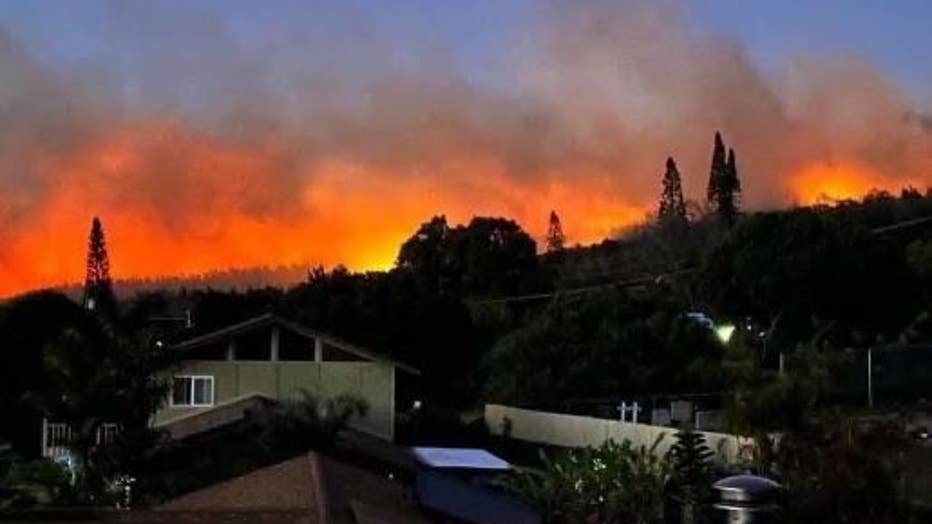From droughts to downpours: How AI is revolutionizing extreme weather forecasting

AI sign displayed on a phone screen, a silhouette of a paper in shape of a human face and a binary code displayed on a screen are seen in this illustration photo taken in Krakow, Poland on January 15, 2023. (Photo by Jakub Porzycki/NurPhoto via Getty
MILWAUKEE - There is a lot of talk these days about artificial intelligence or A.I., and that is also true in the world of weather forecasting.
A.I. is rapidly transforming how we model, detect, and respond to extreme weather and climate events.
In a 2025 review published in Nature Communications, a team of researchers explored the full potential of A.I. and its ability to forecast floods, droughts, heatwaves, and even wildfires.
The goal was to uncover ways to help communities prepare before disaster strikes.
FREE DOWNLOAD: Get breaking news alerts in the FOX LOCAL Mobile app for iOS or Android

Maui wildfires
What we know:
Machine learning and deep learning A.I. models were found to outperform some traditional forecasting techniques and seemed to excel at identifying and predicting extreme events.
That accuracy went up when multiple data sources were integrated into the models, like satellite imagery, climate data, and ground sensors.
The study went beyond basic forecasting and used A.I. to explore the "why," "what if," scenarios of different extreme weather events and even asked A.I. "how confident" it was in those predictions.
A few examples
Droughts: Hybrid models were able to help predict impacts on agriculture and forest health.
Heatwaves: Specific models were able to give improved forecasts of regional temperature anomalies.
Wildfires: Deep learning A.I. was able to provide early detection of dangerous fire events.
Floods: A.I. was seen to enhance early warning systems and real-time alerts.
The other side:
Not everything in the study was a net positive. The authors clearly stressed the need for transparent, ethical, and localized AI systems, particularly in high-stakes scenarios where false alarms can erode public trust or mislead disaster responses. In short, A.I. isn't ready to be handed the reins and will still need significant human oversight, but it could be an amazing tool for forecasters in the very near future.
There are other significant hurdles as well, such as:
Data Limitations: Extreme events, by their very nature, are rare, which makes it hard to train A.I. models. There's also a shortage of data that reflects the diverse geographic and socio-economic realities of our country and our planet.
Integration Issues: AI models, in some cases, under-performed traditional methods. Real-world applications came up short due to high uncertainty, and incomplete data.
SIGN UP TODAY: Get daily headlines, breaking news emails from FOX6 News
What's next:
To unlock A.I.’s full potential, the study's authors suggest we develop better datasets that are tailored for each type of extreme weather event.
They call for greater collaboration across A.I., climate science, and policy disciplines and again stress the need for ethical safeguards, especially for vulnerable communities.
The Source: Camps-Valls, G., Fernández-Torres, M.Á., Cohrs, K.-H., Höhl, A., Castelletti, A., Pacal, A., et al. (2025). Artificial intelligence for modeling and understanding extreme weather and climate events. Nature Communications, 16, 1919. https://doi.org/10.1038/s41467-025-56573-8

